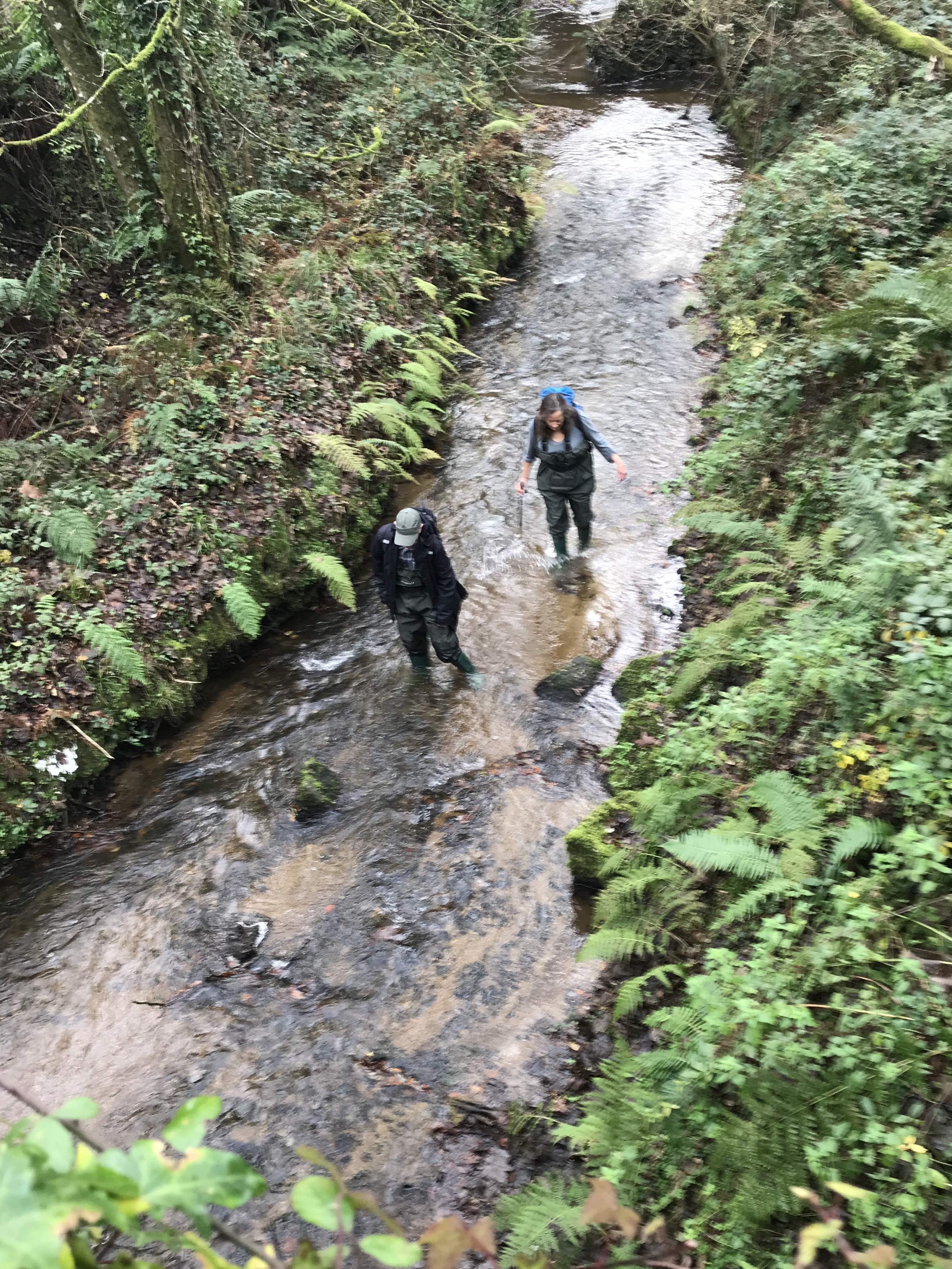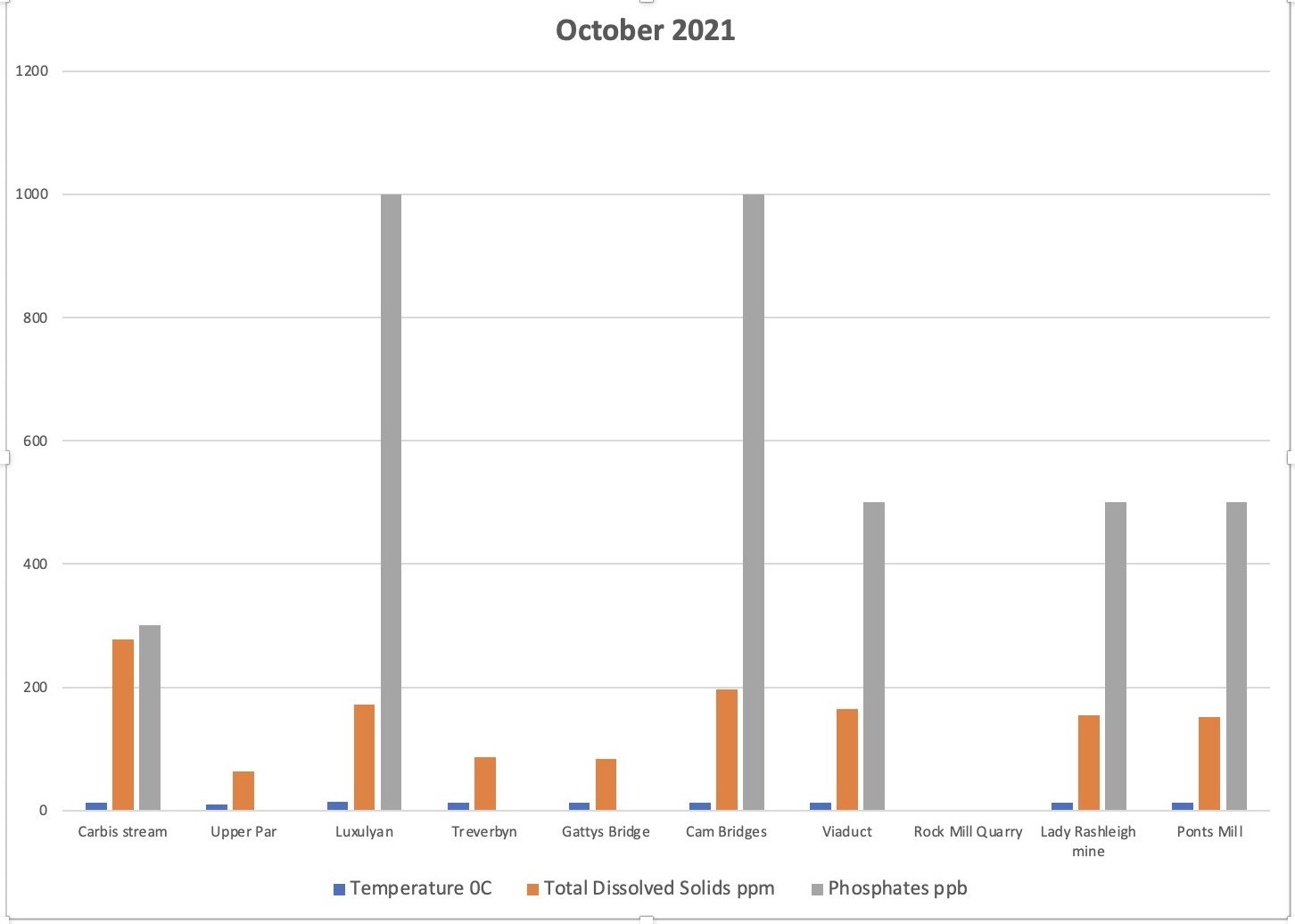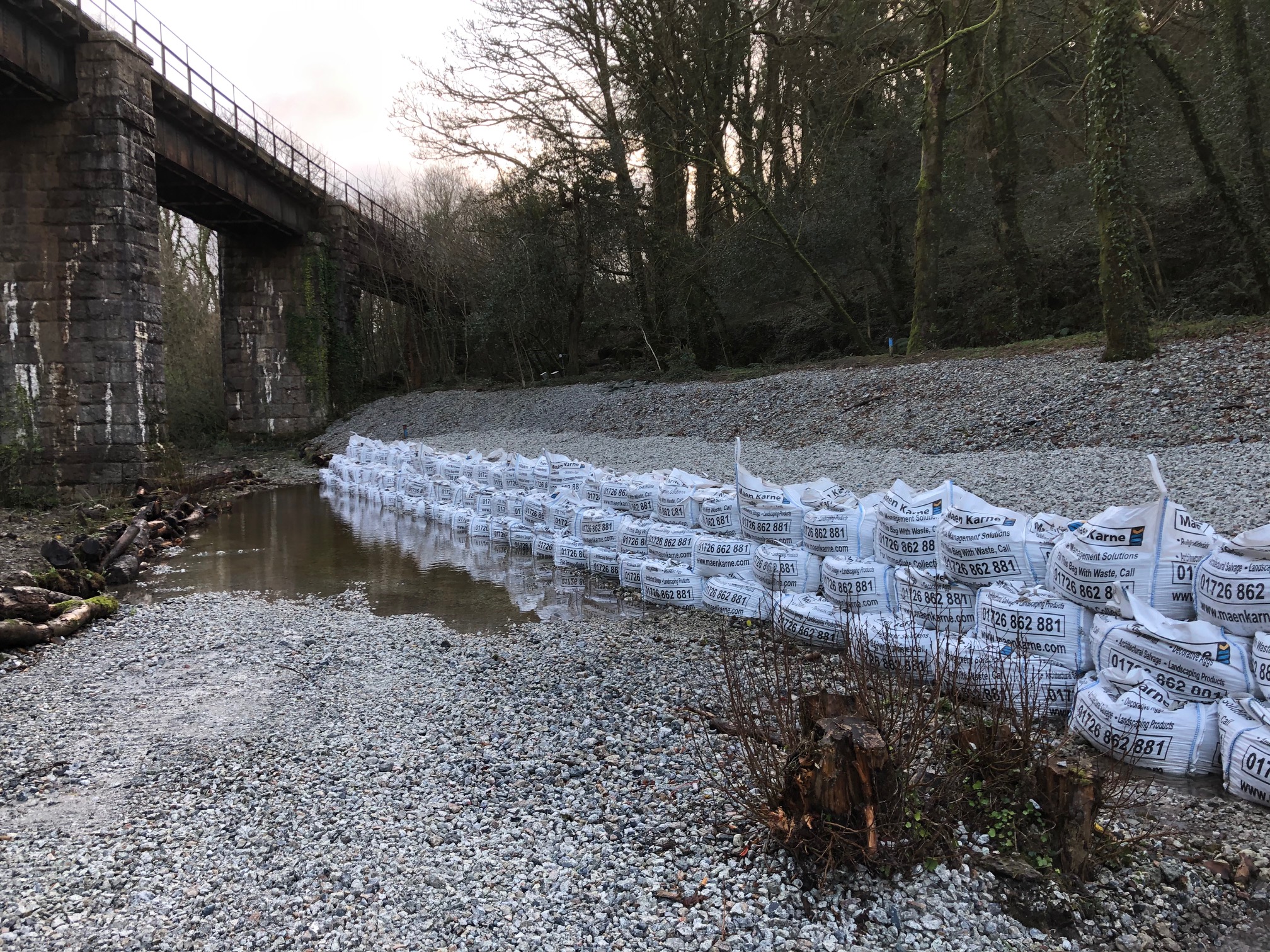Changes afoot in the Valley
I had a lovely trip to the Valley last week helping with the (now) routine river and otter monitoring, this time with Roger and Veronica. Rivers have been in the media lately but sadly not for any of the right reasons. Anyone who keeps an eye on our water monitoring results (see the Home page under Citizen Science project) will know that the babbling water of the Par river is not as clean as it looks. Our major concern is the very high level of phosphate. In fact the Environment Agency (EA) judges the Ecological and Chemical health of the Par as Moderate and a Fail respectively. The national picture is similar: only 14% of rivers have Good Ecological status while none have Good Chemical status. The EA points to the water industry and agriculture as two reasons for the river not attaining Good status.
 Roger and Veronica walking the river
Roger and Veronica walking the river
It doesn’t seem that long ago we were celebrating the improving cleanliness of our rivers, heralded by the return of healthy numbers of trout and salmon; so what has changed? Perhaps we are finally reaping the rewards of the deep funding cuts suffered by the EA through many years of austerity and the dividend rather than water quality driven priorities of our private water companies. Only a few weeks ago the government voted against measures to limit these permissible sewage discharges, only to be rebuked by the House of Lords and an improved bill passed albeit much weaker than is needed. I like to think it is the work of groups like Surfers Against Sewage and Westcountry Rivers Trust (WRT) now collecting evidence the EA used to be able to do that help to effectively lobby for clean and ecologically vibrant waterways once again.

Walking through the Valley it’s hard to believe these problems exist; thankfully we are still detecting signs of otters so there is hopefully sufficient food for them, and the rivers are not choked with suffocating vegetation or ‘sewage sludge’. I sometimes think ignorance is indeed bliss, as it is never easy learning that all is not well in our most treasured landscapes. The last few weeks of COP26 and the endless news about climate change can leave us feeling overwhelmed and powerless. Thanks to being a Friend however and getting involved with others that value our history, nature and landscape combats those feelings of helplessness. Without the citizen science project (one supported financially by FoLV) we might never have known the Par is being contaminated, perhaps not until environmental death and disaster struck. Along with WRT we can support the EA to focus their efforts where it is needed and challenge poor practice.
And there is more good news; Cornwall Wildlife Trust has been appointed the lead delivery partner in an ambitious nature recovery project, aiming to deliver long lasting change for nature, climate and the people of Cornwall. The G7 Legacy Project for Nature Recovery (G7LPNR), in partnership with Natural England, will work with invested partners and volunteers to create a wildlife network in selected places by restoring land and habitats for key species such as dormice, marsh fritillary butterflies and willow tits. It also aims to improve access to nature for people’s wellbeing, improve water quality, sequester carbon and create job and learning opportunities. Fortunately, Luxulyan Valley is part of the two river catchment areas nominated to receive attention (more details in our winter newsletter). This will continue to build on the work started by Cornwall Council.
Visitors to the Valley will have already noticed a lot of landscaping work occurring, from river bank reinforcement, car park improvements, new dog-waste bins, path improvements (though in some cases they have to get worse before they get better as heavy materials are transported around), new accessible picnic areas with funky bench tables and many more benches at popular stopping points. Information panels that will complement our new guidebook (to be published anytime now) will appear soon. I must confess I was really worried by all the proposed changes; would it change that wonderful feeling of just stumbling into a forgotten valley that nature was reclaiming as her own? Would the Valley become packed with visitors drowning out the sounds of forest and river? My walk last week brought reassurance. The riverbank work by the railway bridge (vital flood prevention work) that looked like an open sore last time I saw it was now a green oasis waiting to burst into a wildflower meadow next summer, bringing with it a home for diverse wildlife.
The flood prevention work looking a bit raw: Now a budding wildlife meadow:

Further on, the new picnic area by the bridge and natural beach was unrecognisable, but again instead of brambles the riverbank will be rewilded with new and different homes for nature alongside a pleasant place to view it.
As we stopped to do our monitoring, I watched a young family with a child in a wheelchair walk up the path and stop to enjoy the river, splash in a puddle or two and explore the newly open space. I asked if they came often; they did and the recent improvements in the path and picnic areas makes their visit so much easier and enjoyable. As I watched them continue their family walk it was clear to me that these improvements are undoubtedly beneficial to all Valley visitors be they human, flora or fauna. And that can never be a bad thing!
< A new, New Year Resolution perhaps? Sewage Sleuths >
